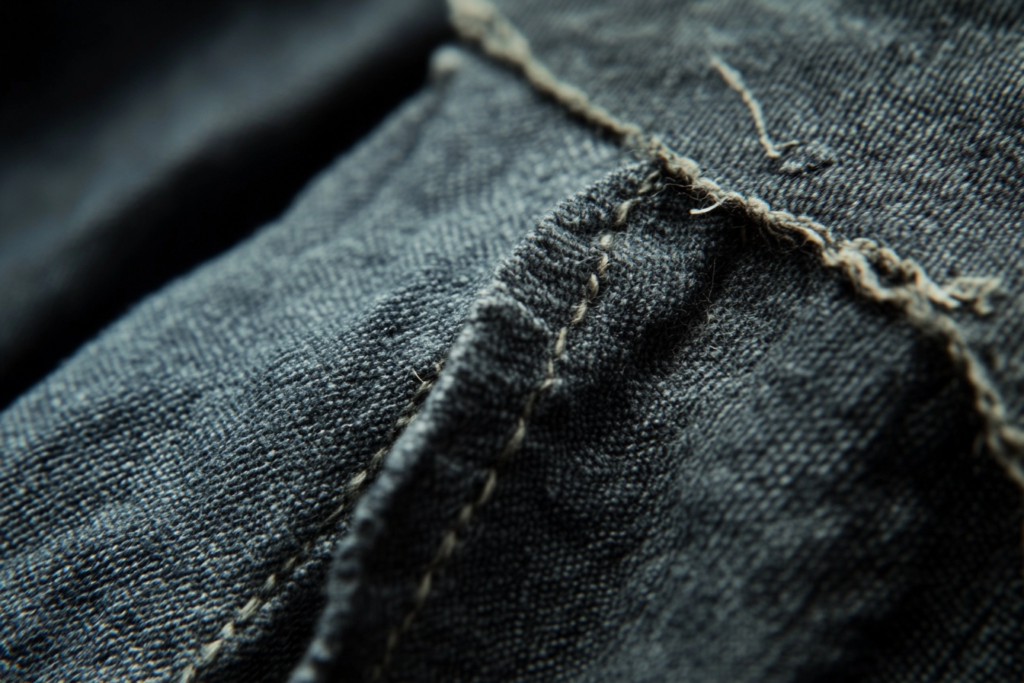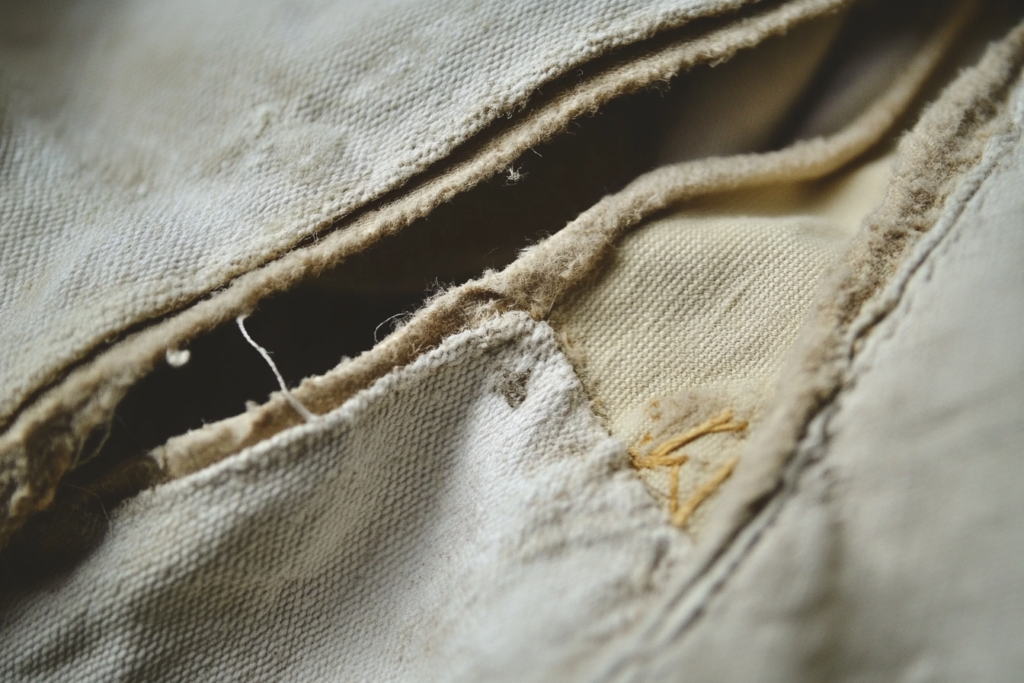Seam Grin: What It Is and How to Avoid It in Garment Construction
Meta Description: Seam grin refers to the exposed seam that appears when a garment seam is pulled apart. Learn what causes it, how to prevent it, and the best techniques for a flawless finish in your sewing projects.
What is a Seam Grin?
Seam grin is a term used in garment construction to describe the visible or exposed seam that appears when a seam is pulled apart. Essentially, it’s the “grinning” of the stitches, where the fabric parts and the seam allowances become visible. This often happens when the fabric is under tension or stress, such as when a garment is worn or stretched.
A seam grin can occur if the fabric is not sewn properly, if the stitching is too tight, or if the fabric is too light and doesn’t hold the seam together well. In essence, seam grin is a sign of poor seam construction, which can affect the durability and overall appearance of the garment.


Why Does Seam Grin Happen?
Several factors can contribute to the occurrence of seam grin:
- Incorrect Stitching Tension
If the stitches are too tight or too loose, the seam may not hold the fabric properly, causing the seam to gape or “grin” when the fabric is stretched. - Poor Fabric Choice
Lightweight or loosely woven fabrics are more prone to seam grin because they lack the structure and strength to keep the seam intact under tension. Fabrics like chiffon or lightweight cotton can often show seam grin if not properly handled. - Weak or Inadequate Stitching
Using an inappropriate type of stitch for the fabric can also lead to seam grin. For example, a straight stitch on stretchy fabrics may not provide the necessary flexibility and strength, while a zigzag stitch might work better for these materials. - Wrong Seam Finish
If the seam is not finished properly (e.g., raw edges are not secured), the seam may start to unravel or expose itself over time, leading to seam grin.
How to Prevent Seam Grin
1. Choose the Right Stitch
- For Stretch Fabrics: Use a stretch stitch or serger to allow the seam to stretch with the fabric without pulling apart.
- For Woven Fabrics: A straight stitch is usually sufficient, but make sure the stitch tension is balanced to avoid strain on the fabric.
2. Adjust the Stitch Tension
- Proper stitch tension is key to preventing seam grin. Ensure your machine’s tension is correctly adjusted for the type of fabric you are working with. Too much tension can cause the fabric to pull, while too little can result in weak seams.
3. Use a Reinforced Seam Finish
- Consider using a French seam, overlock, or bound seam to secure the raw edges of the fabric and avoid any unraveling or exposure. These finishes help to keep the seam stable and less prone to grin.
4. Use Stronger Fabric or Interfacing
- If you’re working with lightweight or delicate fabrics, consider reinforcing the fabric with interfacing or choosing a more stable fabric to prevent the seam from grinning.
5. Press Seams Properly
- Pressing the seams after stitching is crucial. A well-pressed seam will help the fabric hold its shape and prevent pulling or exposure at the seam. Make sure to press the seam allowance in the right direction to avoid unnecessary stress on the fabric.
6. Check for Proper Fit
- If the seam is under too much tension because the garment is too tight or not properly fitted, the seam is more likely to grin. Always check the fit of your garment before finalizing the seams.
Where Does Seam Grin Typically Appear?
Seam grin most commonly occurs in areas where the fabric is under tension or where seams are under stress, such as:
📌 Underarms
- The armhole seams are often a point where the fabric stretches, especially in fitted garments, causing seam grin if not properly stitched.
📌 Shoulder Seams
- Shoulders are another high-stress area where seams might grin, especially in garments with tight-fitting sleeves or when made with fabrics that lack flexibility.
📌 Side Seams
- As the fabric moves with the body, side seams are prone to grin, especially when the garment is worn tightly.
📌 Knee or Elbow Areas
- In pants or sleeves, the area around the knees or elbows can stretch and cause the seam to grin if the fabric isn’t sturdy or the stitch tension is off.
How to Fix Seam Grin
If you’ve already noticed seam grin in your garment, don’t worry—there are ways to fix it:
- Reinforce the Seams
Adding a second line of stitching or reinforcing with a serger can help reduce seam grin, as this will hold the seam more securely in place. - Add a Binding
For exposed seams, consider adding a binding around the seam to secure the fabric edges and prevent them from pulling apart. - Re-Adjust the Stitch Tension
If the seam grin is due to tension issues, re-adjusting the stitch tension on your sewing machine and re-sewing the seam can often resolve the problem. - Consider a Different Stitching Technique
If the fabric continues to experience tension or stretching, consider switching to a more suitable stitch, such as a zigzag stitch for stretch fabrics.
Conclusion: Avoiding Seam Grin for a Polished Finish
Seam grin can ruin the look and functionality of a garment, so it’s important to pay attention to stitching, fabric choice, and proper construction techniques to prevent it. By understanding the causes of seam grin and implementing the right techniques, you can ensure that your garments are well-constructed, durable, and free from unsightly seams.



